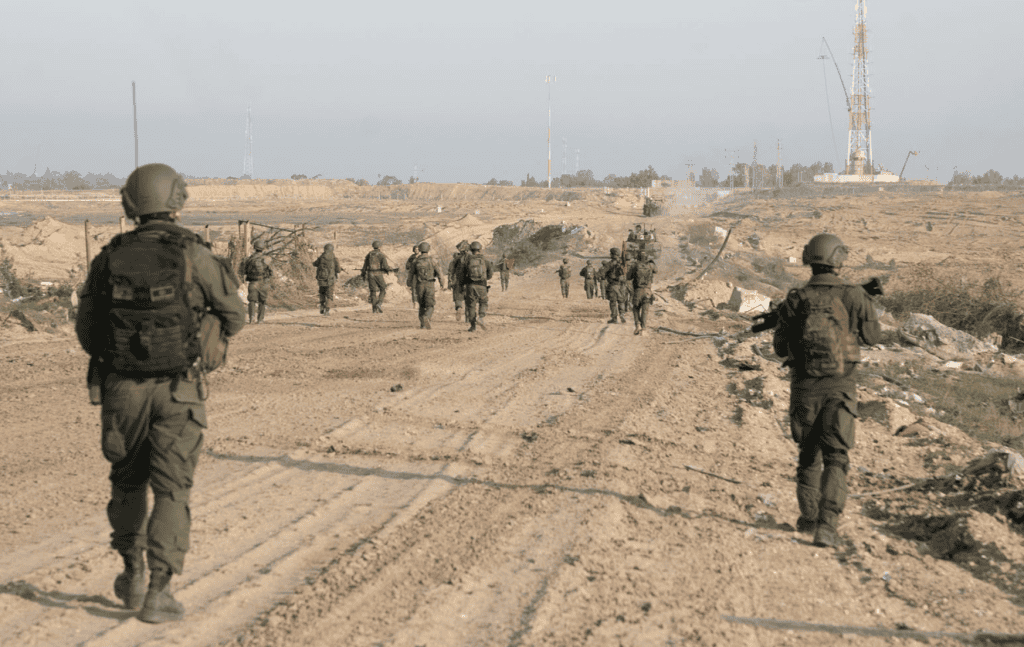
Israel is beginning to shape plans for what will happen after the war in Gaza. It is not yet clear if the war will culminate in a battle that marks the clear end, because Hamas continues to control areas in Rafah and other enclaves.
Israeli Prime Minister Benjamin Netanyahu presented a ‘day after’ plan to Israel’s security cabinet on February 22. The plan is conditioned on Israel meeting its stated goals of the war: eliminating Hamas and Palestinian Islamic Jihad terrorist threats in Gaza and securing the return of the hostages held in Gaza. The plan builds on what was put forth by Israel’s Defense Minister in early January.
Israeli troops have made significant gains against Hamas in northern Gaza and Khan Younis, which may soon allow for evacuated Israelis to return to their homes in border communities. A new security corridor is being constructed along the border between Israel and Gaza and across the Gaza strip. The section across the strip, around five miles long, would enable IDF forces to monitor any terrorist activity seeking to move between southern and northern Gaza.
The plan is contingent upon Israel establishing security control of Gaza. This will mean maintaining Israel’s ability to operate in the area as well as establishing the ability to control or at least closely monitor southern Gaza particularly along its border with Egypt. This is to prevent both smuggling and the re-infiltration of Hamas, given how Hamas has used this area to achieve and maintain control over the flow of humanitarian aid into Gaza. This ability put Hamas in position to work with various international organizations, conferring a perceived aspect of legitimacy on the terror group as the “de facto” ruler of Gaza. Replacing Hamas at the border would be a major step to removing its control over the area.
A third part of the plan is focused on who will control civil affairs inside Gaza. The plan calls for local administrators who are not affiliated with terrorist groups to be in these roles. Israel also wants to replace UNRWA. Israel’s Minister of Defense Yoav Gallant said on February 16 that Israel estimates up to 12% of UNRWA employees are affiliated with Hamas or Palestinian Islamic Jihad. He also presented more details on the 12 UNRWA employees that Israel says were involved in the October 7 attacks. Many of these 12 men were from Nuseirat, an urban area in Gaza affiliated with a refugee camp from the 1950s.
Israel also wants to see Gaza demilitarized and de-radicalized. One possibility is a pilot program of humanitarian “pockets” wherein certain communities are cleared of Hamas with new local administrators put in charge. However, there is concern that locals will not step forward out of fear that Hamas will return and punish them for civil service in their absence.
The IDF has launched several major raids over the last month in northern Gaza to remove Hamas fighters who re-infiltrated. This included raids in Shati in the northwest of Gaza and Zeitun in the south. It is unclear if the “unaffiliated” locals that Israel envisions stepping up to control these areas can be easily found and would be willing to participate.
Meanwhile, Israel’s Yediot media reported on February 23 that Hamas and the Palestinian Authority could agree to support a “technocratic” government in Gaza. This solution could be backed by other Gulf states like Qatar which has hosted Hamas leaders and Saudi Arabia or the United Arab Emirates where former Gaza leader Mahmud Dahlan resides.







